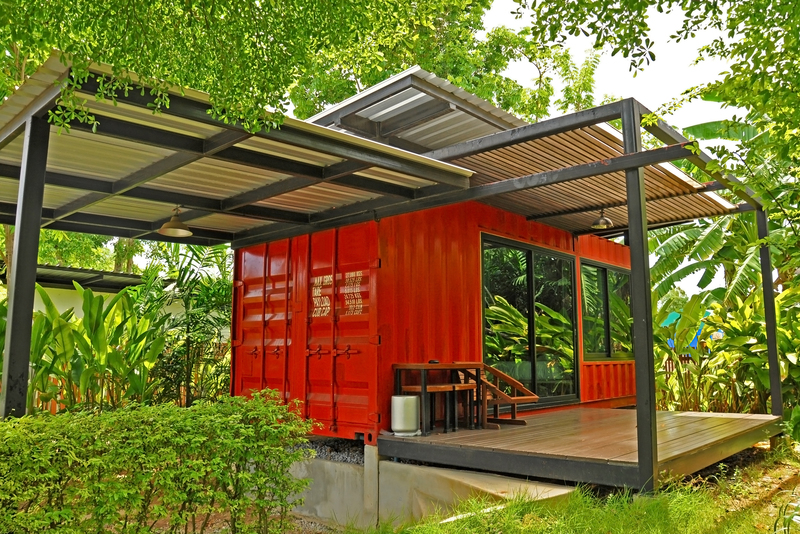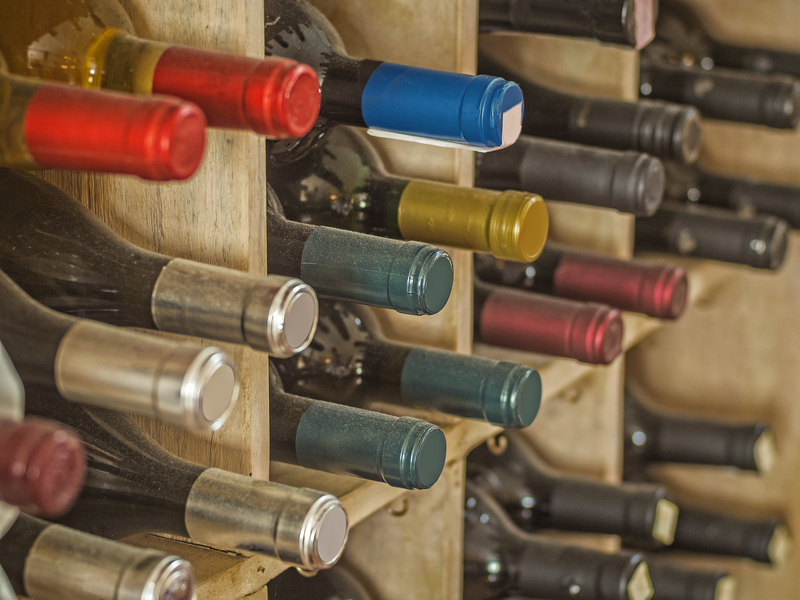Pioneering Methods for Cardboard Disposal and Waste Reduction
In today's fast-paced, consumer-driven society, cardboard waste is a significant issue for households and businesses alike. With the surge in online shopping and product packaging, innovative cardboard disposal and waste reduction methods are crucial to protect the environment and promote sustainability. This comprehensive guide highlights pioneering techniques, tips, and best practices for effective cardboard management. Whether you are an eco-conscious individual, a small business owner, or a corporate sustainability leader, this article will help you discover impactful solutions for cardboard disposal and reduction.

Why Cardboard Waste is a Growing Environmental Concern
Cardboard is one of the most widely used packaging materials worldwide due to its affordability, lightweight nature, and recyclability. However, improper cardboard disposal can strain landfill systems and contribute to environmental degradation. Key statistics include:
- Over 400 million tons of cardboard are produced globally each year.
- Roughly 70% of cardboard packaging ends up in landfills when not recycled properly.
- Decomposing cardboard releases methane, a greenhouse gas more potent than CO2.
Addressing this mounting issue calls for innovative, eco-friendly disposal and reduction strategies that go beyond traditional recycling.
Understanding the Cardboard Waste Lifecycle
To fully comprehend the impact and potential of waste reduction, it's important to understand the journey of cardboard from production to disposal:
- Manufacturing: Cardboard is made from wood pulp, consuming trees, water, and energy.
- Packaging and Use: Widely used for shipping boxes, product packaging, and storage.
- End-of-Life: Cardboard is either recycled, reused, repurposed, or discarded into landfill.
Every stage presents opportunities for intervention and waste minimization.
Pioneering Methods for Cardboard Disposal
1. Advanced Cardboard Recycling Technologies
Traditional recycling methods have limitations due to contamination and mixed-material packaging. Modern recycling facilities are now utilizing pioneering technologies such as:
- Automated Sorting Systems: AI-driven sorters rapidly separate cardboard from other materials, improving recycling rates.
- De-inking and Fiber Recovery: Novel pulping agents remove inks efficiently, yielding cleaner recycled fibers for new cardboard production.
- Closed-Loop Processing: Facilities create high-quality recycled cardboard used for food-safe packaging and new boxes.
Innovation Spotlight: Several startups are pioneering localized, small-scale cardboard recycling units that serve communities, reducing the need for long-haul waste transportation and decreasing carbon footprints.
2. On-Site Shredding and Composting
Businesses and organizations with high cardboard usage are adopting on-site shredding to:
- Reduce the volume of bulky cardboard boxes for easier storage and transportation.
- Create packaging filler or animal bedding from shredded cardboard.
- Enable on-site composting by mixing shredded cardboard with organic waste, producing high-quality compost for landscaping and agriculture.
This method is particularly useful for restaurants, retail stores, and warehouses looking for eco-friendly ways to manage daily cardboard waste streams.
3. Upcycling and Creative Repurposing
Upcycling cardboard into new products is an innovative waste reduction strategy. Some current trends and ideas include:
- Converting large boxes into furniture, art, and decor.
- Using sheets for DIY projects such as organizers, cat houses, or gardening beds.
- Supplying cardboards to local schools or makerspaces for educational uses and creative challenges.
Case Study: Several eco-conscious brands now market entire product lines made from recycled and upcycled cardboard, promoting a circular economy and reducing landfill waste.
4. Digital Platforms for Cardboard Exchange and Reuse
Peer-to-peer digital platforms are emerging to facilitate the exchange and reuse of cardboard at local levels:
- Online marketplaces allow users to list surplus boxes for free pickup or sale, perfect for movers or small businesses.
- Apps connect retailers with individuals or organizations in need of sturdy second-hand shipping materials.
- Commercial recyclers leverage digital portals to coordinate bulk cardboard pickups, improving efficiency and reducing waste.
This new wave of resource-sharing apps supports a sharing economy and actively reduces cardboard sent to landfill.
5. Biodegradable Coatings and Additives
Traditional wax or plastic-coated cardboard is challenging to recycle. New research and businesses have developed:
- Water-based biodegradable coatings that maintain box integrity while allowing for full compostability after use.
- Edible coatings for food packaging that further minimize environmental impact.
Adopting these innovations in packaging design helps solve the persistent issue of unrecyclable cardboard waste.
Comprehensive Strategies for Cardboard Waste Reduction
Source Reduction and Smart Packaging Design
- Brands now invest in minimalist packaging to eliminate unnecessary cardboard and void fillers, optimizing box sizes for their products.
- Adoption of modular packaging designed to nest or collapse, reducing total waste generated per shipment.
- Incentives for customers to return boxes using prepaid return labels for reuse or recycling.
Fact: Source reduction can decrease total packaging-related waste by up to 30% for companies that embrace streamlined, sustainable design principles.
Corporate Responsibility and Circular Economy Partnerships
- Major retailers and shippers are forming cardboard take-back and recycling partnerships with manufacturers.
- Some collaborate with upcycling startups to transform returned cardboard into new consumer products.
- Corporate policies require suppliers to use only certified recyclable or compostable cardboard.
This holistic approach strengthens the circular economy, curbs landfill waste, and demonstrates environmental stewardship.
Community Outreach and Education
The success of pioneering disposal methods depends on public awareness and participation. Proven approaches include:
- Local recycling campaigns to educate about cardboard sorting, contamination, and upcycling opportunities.
- Workshops for residents to learn about DIY uses and responsible disposal practices.
- Public-private partnerships to enhance recycling accessibility in schools, offices, and apartment buildings.
Tip: Enhanced public engagement leads to higher recycling rates and more creative cardboard repurposing at the local level.
Best Practices for Efficient Cardboard Recycling and Reduction
- Keep Cardboard Dry and Clean: Wet or contaminated boxes cannot be recycled efficiently.
- Break Down Boxes: Always flatten boxes to maximize bin space and aid collection.
- Remove Plastic Tape and Labels: These interfere with recycling processes--opt for biodegradable alternatives when possible.
- Utilize Local Recycling Centers: Drop off excess boxes or use scheduled pickups--many communities now offer dedicated cardboard recycling days.
- Consider Direct Reuse: Before disposing, offer boxes for moving, storage, or school projects in your community.
Following these simple yet effective steps helps maximize recycling rates and minimizes unnecessary waste.

Emerging Trends Shaping the Future of Cardboard Disposal
Smart Bins and IoT Integration
Modern waste management systems are leveraging Internet of Things (IoT) technology:
- Smart bins with sensors monitor fill levels and send alerts when pick-up is needed, increasing collection efficiency.
- Automated feedback provides sorting tips to users, further enhancing recycling quality and reducing contamination.
Blockchain for Tracking and Transparency
Blockchain platforms are being piloted for tracking the lifecycle of cardboard packaging. Key benefits include:
- Transparent data on recycled content and supply chain sustainability.
- Verification of responsible disposal, supporting green certifications and eco-friendly branding.
Zero-Waste Business Models
- Some companies are pioneering zero-waste packaging by designing systems where every box is returned, sanitized, and reused multiple times before recycling.
- Sustainable subscription and delivery brands are leading the shift toward reusable, collapsible cardboard shipping containers.
Such innovations reflect a growing commitment to environmental responsibility and a circular approach to cardboard packaging and waste reduction.
Conclusion: Embrace the Future of Cardboard Waste Management
In summary, the explosion of cardboard waste from e-commerce and global shipping calls for innovative solutions for efficient cardboard disposal and waste reduction. By embracing advanced recycling technology, composting, upcycling, digital reuse platforms, smart packaging, and community education, both individuals and organizations can:
- Minimize environmental impact
- Reduce costs associated with waste management
- Contribute to a circular, sustainable economy
- Set a powerful example for others to follow
As pioneers in cardboard management, let us rethink our approach and adopt these new methods to build a cleaner, greener future for all.
Action Steps: How You Can Make a Difference Today
- Educate yourself and others about responsible cardboard disposal methods.
- Partner with local businesses, schools, and community organizations for upcycling and recycling initiatives.
- Advocate for smart packaging policies and support eco-friendly brands focused on reducing packaging waste.
- Implement best practices at home or work to streamline cardboard recycling and composting.
By taking small but meaningful steps, you become part of an innovative movement shaping the future of cardboard waste reduction. Start today, and inspire others to do the same!